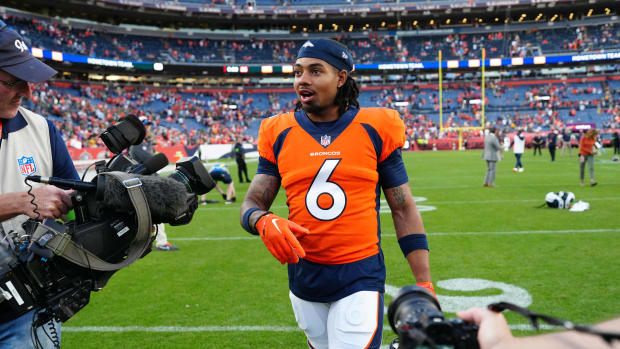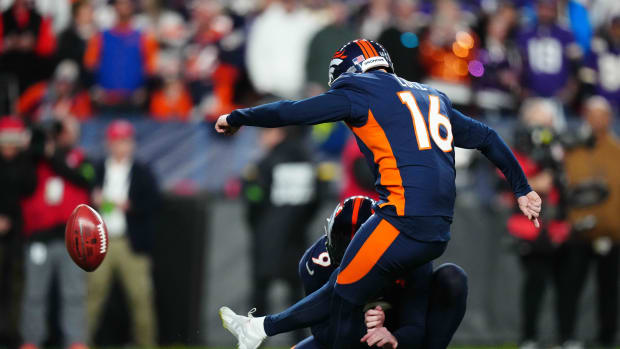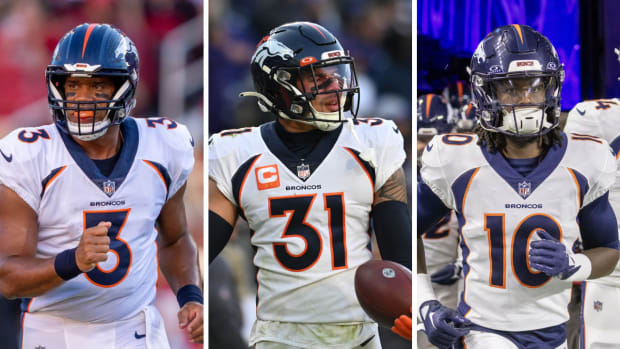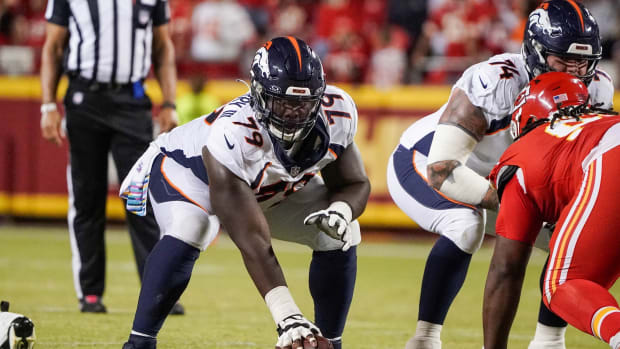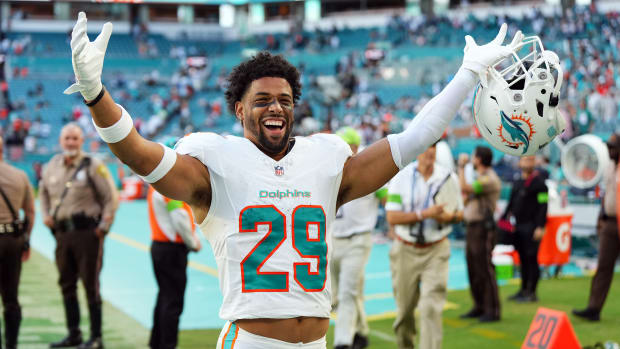Examining the True Cost of Broncos Trading Up into the Top-5 of the Draft
A few days ago, Woody Paige reported that the Denver Broncos had conversations with the Atlanta Falcons about the possibility of trading up for the No. 4 overall pick. That report was disputed by other insiders who spoke to people within the Broncos organization.
Regardless of what the Broncos actually did or plan to do, it's worth asking the question about what it would really cost to move up from No. 9 to No. 4 overall, and just as importantly, when the price gets too high.
I decided to examine the trades up in the first round for quarterbacks since the rookie pay scale was implemented in 2011, to see if there was a pattern with regards to how much a team gave up for the opportunity to draft a QB.
I utilized the Fitzgerald-Spielberger Trade Value Chart at Over The Cap to determine the difference in picks acquired versus picks given up by the teams who moved up. A couple of things to note before I go further.
Not an Exact Science
First, it's not possible for a trade to match exactly what the difference in the picks will be. For example, the difference between the No. 4 overall pick and the No. 9 overall pick is 410 points on the chart, but that would mean giving up the 166th overall pick, which would fall into the late fifth or early sixth round.
Because there's no chance that a team would accept that in exchange for moving down from pick 4 to 9, you need to assume you will pay more than what the difference in picks actually is. What you need to remember is not to pay too much more.
Future First-Rounder Value
Second, with future picks, I valued them at the lowest pick in a particular round. In other words, a future first is considered worth the 32nd overall pick. This is important to keep in mind, because teams don't know where future picks will fall at the time they trade them.
This means I don't score picks whose overall spots are now known to be at a particular pick, because teams couldn't have known that when they made the trades. Scoring the pick based on where it actually fell means you're judging something a team had no idea about at the time.
With those two factors in mind, I tallied the total value of picks acquired and picks given up, then looked at the difference. Here's what I found.
Trade Rankings
Since 2011, there have been 15 trades up the first round, or back into the first round, for quarterbacks, including the San Francisco 49ers' recent trade to No. 3 overall in which it would be a shock if they don't take a quarterback.
Here are the rankings of those trades by the difference in picks acquired, versus picks given up, by the team who moved up the board.
- Robert Griffin III, Washington (2 for 6, 39 and two future firsts): 3,074
- Sam Darnold, Jets (3 for 6, 37, 49, and future second): 2,739
- Jared Goff, Rams (1, 113 and 177 for 15, 43, 45, 76, future first and future third): 2,545
- Carson Wentz, Eagles (2 and 139 for 8, 77, 100, future first and future second): 2,545
- QB TBD, Niners (3 for 12, two future firsts and future third): 2,473
- Mitchell Trubisky, Bears (2 for 3, 67, 111, and future third): 1,963
- Josh Allen, Bills (7 for 12, 53 and future second): 1,607
- Patrick Mahomes, Chiefs (10 for 27, 91 and future first): 1,455
- Josh Rosen, Cardinals (10 for 15, 79 and 152): 1,035
- Deshaun Watson, Texans (12 for 25 and future first): 872
- Blaine Gabbert, Jaguars (10 for 16 and 49): 790
- Johnny Manziel, Browns (22 for 26 and 83): 676
- Lamar Jackson, Ravens (32 and 132 for 52, 125 and future second): 673
- Paxton Lynch, Broncos (26 for 31 and 94): 609
- Teddy Bridgewater, Vikings (32 for 40 and 108): 514
Takeaways
• Any time a team approached or exceeded a difference of 2,000 or more points, the riskier the move got — and in all cases except one, the teams have moved on from that QB — and the exception is the Niners, the team who just recently made their move up and hasn't drafted yet.
• The five highest differences all came in trades made before draft day. I would argue this is because, before the draft, teams can haggle all they want until other teams come up with an offer they like, whereas on draft day, teams are on the clock and have to be quicker in deciding on trade offers.
• All trades up or into the top-10 came at a difference of at least 1,000 points, with one exception: the Jaguars' move up the board for Blaine Gabbert.
What it Means for Denver
The cost to move up from No. 9 to No. 4 overall isn't going to be cheap, but that doesn't mean, if the Broncos do it, they should sell the farm.
A possible guiding principle for the Broncos, should they want to move up, is to stay within the difference of what the Bills and Chiefs gave up to get their QBs — not because their QBs have worked out thus far, but because they weren't too aggressive in moving up. In other words, their trades are more likely to fit in with George Paton's "aggressive but not reckless" mindset.
To that end, my belief is that if the Broncos want to move up the board, they need to wait until draft day to do so, which means a better chance of giving up less to move up the board.
As for what they would have to give up to move from 9 to 4, I would say that depends on how high a future pick you send. If you send a future first, you don't send anything more than the third-round pick this year at No. 71 overall, though I'd try to make it the fourth-rounder at No. 114 overall.
If the Falcons were to insist on this year's second-round pick, which is No. 40 overall, I would be fine with including a future second, but not a future first. If Atlanta insisted on No. 40 and a future first, I pull out of negotiations, because the price gets too high.
If the Broncos move up to a later spot, should they want a QB and one they love is still there, they need to go lower, but still recognize they need to give up something that another team is willing to take.
To move to No. 5 overall, if the Cincinnati Bengals want a future first, I'm not going higher than No. 114 overall to include in a trade. For No. 6, the highest I go is No. 114 and a future second, and for No. 7, it goes to No. 114 and a future third. For No. 8, No. 114 and a future fourth is my limit.
Bottom Line
Regardless of how much you want the Broncos to draft a QB, you need to set your limits, because there is, indeed, such a thing as giving up too much for a QB. Remember, getting the QB may be important, but so is building the team around the QB, and the draft is always the best way to go.
We'll see what the Broncos decide to do when the draft arrives in a week's time, but if Paton's belief is to be "aggressive but not reckless," I wouldn't expect a blockbuster trade like the Niners made.
Follow Bob on Twitter @BobMorrisSports.
Follow Mile High Huddle on Twitter and Facebook.
Subscribe to Mile High Huddle on YouTube for daily Broncos live-stream podcasts!
